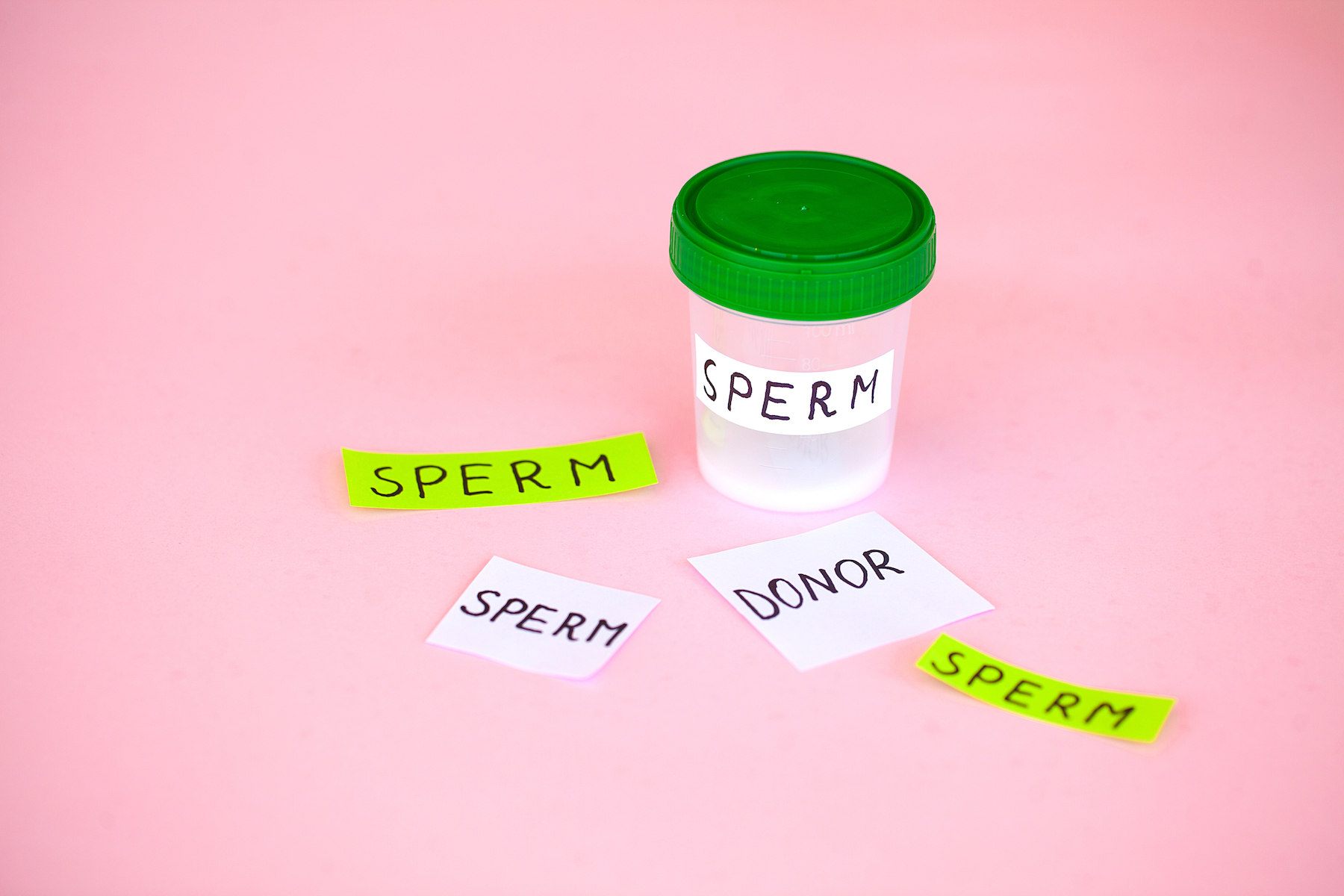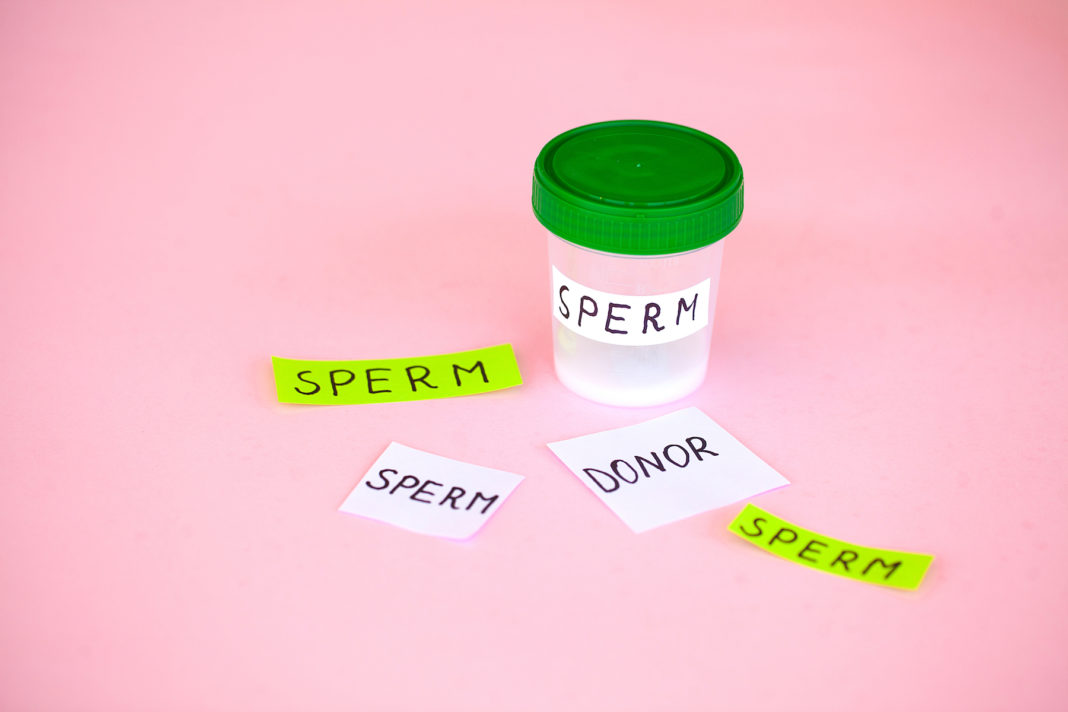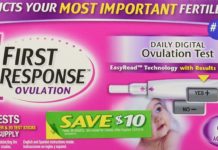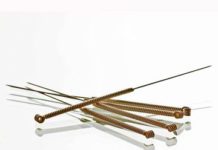
Sperm donors are needed for a plethora of reasons—from male infertility to same-sex couples or single women looking to start a family.
While each sperm donor story is unique, the process in choosing one is actually pretty universal. This is what the process is like to find a sperm donor, according to fertility experts.
Step 1: Medical Testing at a Fertility Clinic
Usually, people looking to find a sperm donor start by choosing a fertility clinic that they are looking to help guide them through the process of connecting the a cryobank (where donor sperm is held).
"In my practice we run tests to identify what the problem is when it comes to their fertility. In heterosexual couples, we evaluate both the female and male partner, and in same sex couples we evaluate the partner looking to carry the child," says Joseph Alukal, MD, urologist with NewYork Presbyterian/ Columbia University Medical Center.
Once it is decided that donor sperm is desired, the process shifts to further medical testing of both partners.
"We run through their basic medical history and require STD and blood tests done for both partners (to determine blood type, immunity/vaccination history)," says Mary Howard, CNP, certified nurse practitioner at Cleveland Clinic Fertility Center.
Step 2: Establish an Emotional Support System
After it's determined that a sperm donor is desired, the next step is to speak with a mental health professional.
"We then set them up with social worker or psychiatrist, who must clear the couple psychologically," says Howard. "Couples usually end up really liking this, as the social worker/psychiatrist is meant to discuss topics like if they plan to tell their child about their donor (some couples do not), how they will tell their child. They ask about support systems and resources they may or may not have to raise the child. And offers advice about what other couples have done in the past."
"It is a really weighted decision, from an emotional standpoint," adds Dr. Alukal.
Step 3: Choose a Donor Through a Cryobank
After this step, couples are usually counseled about how to choose a cryobank (fertility clinics often have a list of preferred banks). And from there, they are left to scroll through profiles of donors on each cryobank's website.
"We do offer counsel as far as screening sperm donors. Cryobank websites are set up similar to dating websites, allowing couples to narrow down donors based on a plethora of characteristics," says Howard. "Many couples choose donors with similar characteristics physically to themselves."
Many cryobanks offer photos of donors as children, and usually offer different tiers of information for more money…including more baby photos, adult pictures (in some cases), access to questionnaires, and voice recordings.
A crucial part of this step is also determining if couples want an anonymous donor or known donor.
"Typically, we recommend using an anonymous donor because when using a known donor, there are many other challenges legally that can also stall the process," says Candice Perfetto, MD, fertility specialist at the Center of Reproductive Medicine in Texas.
If they choose an anonymous donor, there is also another option of an 'open' or closed donor, in most cases meaning the donor is open for the future child to contact the donor once he/she turns 18.
Step 4: Place Your Order
Once a donor is selected, the sperm is ordered. And it's just like Amazon. Yes, really.
"Patients usually create an account with a cryobank, and order a certain number of vials of sperm. The type of sperm they order also depends on if the couple will do intrauterine insemination (also called IUI,) or IVF, says Dr. Perfetto. "You just add it to your cart and pay, and the samples are sent to your fertility clinic."
Depending on the cryobank you use and how many vials you order will determine the overall cost.
"Typically, each vial of sperm costs between $800-$1,000, and we usually recommend couples order between 3-6 vials per cycle," says Howard. (Most cryobanks also charge a shipping fee, which can average around $200.)
From there, the process is overall speedy.
"The entire process takes about a month, between bloodwork and other testing and ordering the sperm," says Howard.
Real-life stories
Here are two stories of women who have used sperm donors: one same-sex couple, and one heterosexual couple dealing with male infertility.
Navil Barahona, 31
Our journey started back in 2017 when I was 29-years-old. The reason why (my wife Ashlie and I) even looked into a sperm donor is because my mom was diagnosed brain cancer July 2016, and wasn't given very long. We really wanted her to have the opportunity to be a grandmother.
In the doctor's office, it was decided that I would carry the baby, as I was covered by excellent insurance at the time. It would have cost my wife $30,000, but for me it was closer to $11,000 (not including the vials of sperm).
We started shopping for a donor with California Cryobank. It's like online shopping. You can literally search by so many different categories. But it was really important that our donor be as close to our ethnic backgrounds as possible. We needed a donor that was Philippino-Mexican, which was super rare. We also decided we wanted to use an anonymous donor who was also 'open' so our daughter will have the chance to contact him when she turns 18 if she desires to.
[On the site,] we were able to see photos of what he looked like as a child, his medical history, his family medical history. We read about what he majored in in college, his hobbies, his career. And all his physical attributes—his hair and eye color, how tall he was, weight. We got a facial profile, but not actual adult photos.
Once we confirmed our donor, we were sent a keepsake package with more photos and a more extensive profile. They sent us a questionnaire, he wrote a message to people who purchased his sperm, and w e got a 20-minute audio of his voice to hear him talk about his life, growing up, and his family values. It really made us feel confident in our decision to pick him.
We also signed up for a sibling registry, so we're aware of how many kids exist because of him. We have since connected with those families who have used his sperm, and we're at 15 members now of different families that have used this man's sperm from all over the United States. And these kids look alike! We recently spent a weekend all together, and plan to do it twice a year. We hope as they grow up, they will become friends. But the sibling registry also makes us feel more secure about any medical issues or health concerns we may have, we all can share and support each other.
What I want parents to know:
One thing I can tell people who are looking into finding a sperm donor is that you really need to be 100% with the donor you pick. It's a commitment, and it is not easy. It is draining on you, your body, your emotions and mental health, your partner. But we would do it a million times over!
Jessie, 34* (name has been changed to protect anonymity)
My husband and I started trying to have a kid when I was 32. After trying for several months to start a family without success, I was referred to a fertility doctor. I assumed our setback in starting a family was most likely due to something wrong with me because that's everyone's immediate go to assumption—that it has to do with the woman. I was a bit heavier at the time, and thought it was maybe a thyroid issue. After some initial lab work for me, the doctor also ordered a semen analysis on my husband, which is when we found out he had zero sperm.
To hear that we had zero sperm was such a punch to the gut. We both went through an identity crisis. There was a huge grieving process for both of us. But I didn't want to stay in that place of grief. So, I went on Instagram and started searching #infertility, and I found a heterosexual couple that used #donorsperm. I reached out and heard about her experience. It was really helpful.
The first step was to do a mandatory counseling session. It was frustrating to pay money to get permission to make a baby since everyone else can just go and do it on their own. But seeing the counselor was very helpful. It helped us discuss things we didn't think to cover on our own.
We were able to narrow down to 3 donors in just a couple of minutes. It was such a fast process. We wanted to choose a donor that looked similar to my husband and I. We didn't want to deal with our child asking why do I look different? We are still not sure if/when we will tell our child about it. (If we do, it will likely be past teenage years.) We figured it was best to all look like a family.
We got child photos, and for more money you could purchase extra photos, his genetic history and an audio of his voice. We felt very confident about our donor. He is anonymous but 'open' if we do decide to tell our daughter about her sperm donor, she will have the opportunity to contact him, but we did not sign up for a sibling registry. And it was especially important to me that my husband was confident and had the final say in choosing the donor. We ordered 10 vials of sperm that were $900 each, and we got pregnant with our daughter during our first IUI in June 2017.
When she was born, we banked her cord blood in case she is ever sick and needed therapy for stem cells. Since we only have genetics on my side and cannot contact the donor to know something medically, we see it as an insurance policy for her health. It cost about $2,000 dollars. In total, it cost around $12,000 dollars to have our first daughter.
When our daughter was 9 months old, we started trying again with the same donor so they can look like siblings. I actually got pregnant in December, but experienced a miscarriage in January. We have just finished our 4th cycle of IUI, and it's been discouraging. But I've been reminded that it usually can take between 3-6 cycles of IUI for most people. The fact we got pregnant with my daughter on my first ever IUI was really rare.
We live in a small community, and have only shared with our immediate family that we've used a donor. We want to protect our daughter and want her to feel like everyone else. I find a lot of support on social media looking for relatability. I often search under #iuisuccess, #donorsperm, or #iui. It was so wonderful to go from a place of despair to hope when we found out we couldn't have kids on our own.
What I want parents to know:
I want readers to know that my husband and I were struggling and afraid that we were not going to feel that same type of love and bonding using a sperm donor. I had some bonding issues during pregnancy because I was coming from a place of fear. But the minute you have the baby, it is your child. The moment you have your baby, those mother-father feelings fall into place. You will feel connected.
































